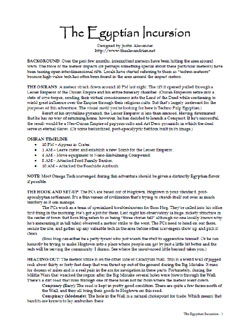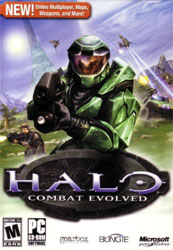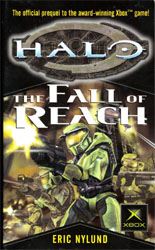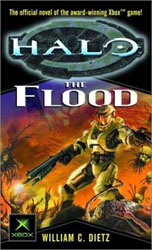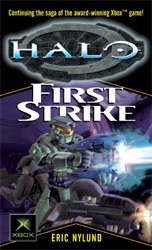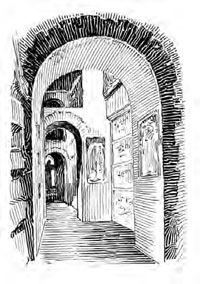The experience of writing something and turning it loose into the world is a fascinating one. Michael Suileabhain-Wilson, author of “Five Geek Social Fallacies“, puts it elegantly when he writes:
Thus, when I realized that 5GSF was striking a chord, I started following the referrers from my server logs, to see what the conversation was. That was transformative.
I have trouble coming to terms with the way people respond to the written word; the critical element, I think, is a powerful sense of detachment. Readers, more often than not, seem not to be invested in their relationship to the text. This is a different standard from the stage. Performance is, in some respects, harder than writing — if nothing else, you can’t revise away a misstep — but your audience is usually rooting for you. They came out to see the show; they have some personal investment in their own enjoyment. They want you to succeed, and as long as you don’t stink, you’ll probably be OK. Text, on the other hand, has distance built in. A reader needs to be wooed. If you fail to serve their needs, they have no mercy. (The exception here is if the reader is already a fan of yours, in which case they’ve made a personal investment which gives you some wiggle room.)
It’s difficult watching people respond to your work in that detached fashion, particularly when you have learned the first lesson of Internet criticism: never respond to a critique of your own work except to correct errors of fact, and sometimes not even then. Detached distaste is infuriating; detached approbation is unsatisfying.
The most popular thing I’ve ever written for The Alexandrian is, without a doubt, “D&D: Calibrating Your Expectations“. It was the first article on the site to attract widespread attention. (Looking at the server logs I can see it getting hot at Giant in the Playground, moving over to ENWorld, making the jump to WotC’s boards, and then exploding at StumbleUpon.) In fact, I think it’s fair to say that if I hadn’t written it the Alexandrian wouldn’t exist today. Tossing your words out into the empty void gets frustrating after awhile.
In short, “Calibrating Your Expectations” gave me an audience. And even now, several years later, it consistently remains the most popular page on the site. (Although the Three Clue Rule gives it a run for its money.)
But the interesting thing for me is that the article seems to have become popular for reasons that are almost completely inverted from the reasons that I wrote it.
What I thought people would take away from the article was a fresh appreciation of high-level play in D&D. I felt that people were struggling with a dissonance between what they thought high-level D&D was supposed to be like (Conan or Lord of the Rings) and what high-level D&D was actually delivering (mythological demigods). I thought that if people became conscious of the dissonance then they would be able to enjoy high-level play for what it was. (And this wasn’t even just about people who were unhappy with high-level play. I felt like even people who were having fun with high-level play were frequently underestimating just how awesome their characters were.)
Nor was this meant to be some sort of One-True-Wayism. I wasn’t trying to say, “High-level play is the only way to go!” But when I wrote that “Aragorn is about 5th level”, for example, what I was trying to say is, “And that means 5th level is pretty amazing. Which means that 15th level is really amazing. Let’s embrace the epic quality of our high level characters. Let’s tell stories worthy of Hercules!”
What actually happened (and, in retrospect, this should have been obvious to me) was that people who were experiencing dissonance with high-level play did, in fact, find their answers in the article. “Calibrating Your Expectations” was succesfully delivering its message that, “5th level is pretty amazing!” But most readers took that premise in a completely different direction than I did, instead grabbing hold of this passage from the article:
What frustrates some people is that D&D assumes that you’re going to move from one level of power to an extremely different level of power. So they spend a lot of time tweaking the system and trying to get it to perform at a more uniform level from 1st to 20th level.
I think this is the hard way of doing it. Instead of fighting the system, I’d rather try to work with it: Target the precise range of levels which form the “sweet spot” for whatever campaign concept I’m working on, and then tinker with the character creation and advancement rules to keep the campaign focused in that sweet spot. Those changes can be as simple as “XP awards will be 1/10th the normal size and everyone should create a 5th level character”, but more complicated variants are more than possible.
The point is that you find that “sweet spot” and then you tinker with one aspect of the system, rather than trying to redo the whole thing.
And the conclusion they reached was, “Let’s stick to low-level play.”
Which makes perfect sense. Heck, I’d even written it. But what I thought had been a secondary conclusion was, in fact, the primary conclusion for most people.
(What I find really interesting is the add-on effects from this. People who argue that D&D should stick to the gritty fantasy of low level play will cite the article to help explain their position. People who disagree with them will follow the link and read the article with eyes biased by the guy giving them the link. And then I get angry e-mails from people who think I hate high-level play because I argue that Aragorn is a 5th-level character. Take a moment to think about what that has to say about how ideas are transmitted and what the implications are when you apply it to things more important than discussions about game mechanics.)
E6
One of the really interesting things to come out of this gestalt was E6: The Game Inside the World’s Most Popular RPG. Designed by Ryan Stoughton, E6 is a system mod for D&D that allows PCs to reach 6th level and then puts character advancement into a cryogenic freeze: Characters can still advance, but only through feats (slowing the rate of that advance considerably). The philosophy of E6 was influenced by Ryan Dancey’s statement that D&D “by design changes roughly every 5 levels”, resulting in four distinct quartiles of play:
Levels 1-5: Gritty fantasy
Levels 6-10: Heroic fantasy
Levels 11-15: Wuxia
Levels 16-20: Superheroes
And in E6, basically, PCs are allowed to reach the Heroic Fantasy “quartile” and then things are slowed down so that they never leave it. This could be partly mimicked, of course, by simply reducing XP awards. But E6 improves on that model in two ways: First, by dripping the advancement in the form of feats, E6 allows for a constant pace of rewards in the form of character advancement. Second, beyond a certain point feat-based advancement no longer allows the PCs to simply become better at what they already do. The PCs are forced to diversify their abilities instead of increasing them. This allows the system to side-step a hard cap: The PCs can continue developing virtually forever.
E(X)
E6 works. It dials in a desired result and locks it into place. But what I find particularly interesting about the E6 system is that it works for any level, not just 6th. Want your PCs to stay as mere mortals? Play E1. Want to crank it up a notch so that your PCs are slipping through dimensions and polymorphing into strange creatures? Welcome to E8. Looking for some plane-hopping demigods? E15, at your service. Want the full D&D experience but think the Epic Level Handbook is a load of bollocks? E20 is your ticket.
It’s also trivial, of course, to skip the initial leveling up phase. Just dial in your desired E-level for the campaign and away you go.
THE CORE RULE: Level advancement is capped at Level X. Upon attaining Level X, characters earn a new epic feat every time they earn an amount of XP equal to the amount of XP they needed to advance to Level X from the previous level. (For example, advancing from 7th level at 21,000 XP to 8th level at 28,000 XP requires 7,000 XP. Therefore, if you’re playing E8, you get an additional feat every 7,000 XP.)
BUILDING ENCOUNTERS: When calculating Average Party Level (APL), treat every 5 epic feats as a +1 adjustment to a character’s level to a maximum of 20 feats. After that point, treat every 10 epic feats as a +1 adjustment to a character’s level.
In general, you still shouldn’t use opponents with CRs higher than Level X + 4. You should either use a larger number of lower CR creatures or you can advance monsters by giving them epic feats (using the same guideline as for PCs to determine their adjusted CR).
EPIC FEATS: In general, any feat can be selected as an epic feat (assuming prerequisites are met). The following feats can also be selected–
Ability Training: You spend time honing your abilities. Pick one ability score. You qualify for the Ability Advancement feat for that ability. (You can gain this feat multiple times, but its effects do not stack. Each time you take this feat it applies to a different ability.)
Ability Advancement: Your training pays off. Pick one ability score for which you have the Ability Training epic feat. You gain a permanent +2 bonus to that ability. (You can gain this feat multiple times, but its effects do not stack. Each time you take this feat it applies to a different ability.)
Expanded Spell Knowledge: You learn new spell(s) whose level equals half your caster level (round down, and treat a new 0th-level spell as 1/2). (Thus, a sixth level Sorcerer could learn one 3rd level spell, one 1st and one 2nd level spell, three 1st level spells, or six 0th-level spells.)
Expanded Caster Stamina: You gain 1 or more new spell slots, with spell levels totaling to half of your caster level. Treat 0th level spells as 1/2. (Thus, a sixth level Wizard could gain one 3rd level slot, one 1st and one 2nd level slot, three 1st level slots, or six 0th-level slots.) This feat cannot provide spell slots higher than you can already cast.
EPIC SPELL FEATS: Certain spells that have effects which are necessary to avoid “no-win scenarios” (like raise dead or stone to flesh) may have a level which is too high to cast in a particular E(X) campaign. The following epic feats duplicate the effects of these spells. However, the DM should feel free to eliminate them if they feel that the particular spell doesn’t fit the power level or atmosphere they’re trying to achieve. (If you do eliminate some of these, consider including artifact-level powers that can be sought out from remote oracles, completing holy quests, or the like as part of the campaign.)
Atonement: You can use atonement, as the spell.
Break Enchantment: You can use break enchantment, as the spell with a 250 gp material component.
Dispel Magic: You can use dispel magic, as the spell with a 100 gp material component.
Gentle Repose: You can use gentle repose, as the spell with a 100 gp material component.
Raise Dead: You can use raise dead, as the spell (paying the material component cost). (Losing a level, in the context of epic levels, means losing a feat and the associated XP. You may want to add resurrection and true resurrection as part of a feat chain.)
Regenerate: You can use regenerate, as per the spell with a 1,000 gp material component and a casting time of 1 hour.
Remove Blindness/Deafness: You can use remove blindness/deafness, as the spell with a 100 gp material component and a casting time of 1 hour.
Remove Disease: You can use remove disease, as the spell with a 100 gp material component and a casting time of 1 hour.
Restoration: You can use restoration, as the spell (paying the material component), with a casting time of 1 hour. (Note: You might include lesser restoration and greater restoration and turn this into a feat chain.)
Stone to Flesh: You can use stone to flesh, as the spell with a 1,000 gp material component, with a casting time of 1 hour.
TIP: A lot of class abilities would work just fine as feats. Even more class abilities would be appropriate as epic feats (or as part of an epic feat chain). The DM is encouraged to be flexible in helping players achieve the effects they want, as long as they would normally be achievable for the level range that the DM is shooting for.
WHAT E(X) IS RIGHT FOR YOU? If you’ve got a general sense of what level you like “best” or beyond which you feel the game no longer “feels right”, aim roughly 2-4 levels below that in setting your Level X. (The acquisition of epic feats will push the power level up into the range you’re looking for.)
Another way to think about it is to look at the most powerful monsters you imagine the PCs fighting on equal terms. Again, aim 2-4 levels below that when setting your Level X.
This material is covered under the Open Game License.
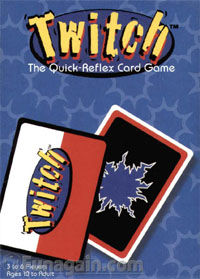 The premise of the game is simple: Someone plays a card. The cards tells you who goes next. If it’s you, you’ve got to play another card before someone challenges you and you have to take the entire stack of cards. If it’s not you, you’ve got to figure out who it is and challenge them before they can play. Be careful, if you play or challenge wrong you’ll end up taking those cards.
The premise of the game is simple: Someone plays a card. The cards tells you who goes next. If it’s you, you’ve got to play another card before someone challenges you and you have to take the entire stack of cards. If it’s not you, you’ve got to figure out who it is and challenge them before they can play. Be careful, if you play or challenge wrong you’ll end up taking those cards.
